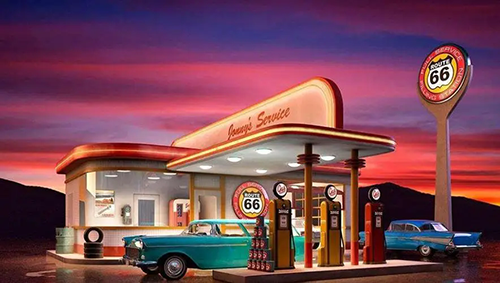What is the principle of measuring fuel volume with a fuel dispenser
The principle of measuring fuel volume with a fuel dispenser is a comprehensive process that involves multiple key components and technical means. The following is a detailed measurement principle:

Firstly, the principle of Flow meter
The Flow meter in a fuel dispenser is the core device used to measure the amount of oil flowing through the fuel pipe. Common flow meters include turbine flow meters and volumetric flow meters:
Turbine flowmeter: measures the amount of oil by measuring the turbine speed in the oil flow. When fuel flows through the turbine, the turbine rotates and its speed is proportional to the flow rate of fuel. By measuring the speed of the turbine, the flow rate of fuel can be accurately calculated.
Volumetric flowmeter: It measures the volume flowing through a fixed container. When fuel passes through a volumetric timer, it fills a fixed volume container. By calculating the number of times the container is filled, the total volume of fuel can be determined.
Secondly, principles of electronic computing
The fuel dispenser calculates and processes the measured fuel volume through its internal computer system. The computer will calculate the amount of fuel required to be paid by the refueling vehicle through certain algorithms based on the measurement results of the flow meter, oil density and other parameters. In the calculation process, some factors such as temperature compensation, capacity correction, etc. will also be considered to improve the accuracy of the measurement.
Thirdly, the principle of measuring sensors
The measuring sensor in the fuel dispenser is mainly used to measure the temperature and density of the fuel. The changes in temperature and density directly affect the volume and mass of fuel, thereby affecting the accuracy of measurement. By measuring the temperature and density of the oil, the oil quantity can be corrected to ensure the accuracy of the measurement.
Fourth, workflow
The working process of a fuel dispenser is roughly as follows:
The electric motor drives the oil pump to pump the fuel from the storage tank into the oil and gas separator through a suction pipe and filter for oil and gas separation.
Under pump pressure, fuel is measured by a flow meter.
The fuel is then fed into the motor vehicle through the sight glass and fuel gun.
Fifth, Error Control and Verification
The measurement accuracy of fuel dispensers is strictly regulated by the state and belongs to the mandatory inspection and key management of measuring instruments in accordance with the law. Mandatory calibration of fuel dispensers shall be carried out by legal metrological calibration institutions, with a calibration cycle of six months. The measurement accuracy of a fuel dispenser is usually ± 0.3%, which means that when adding 20 liters of fuel, the negative deviation cannot exceed 60 milliliters, and the actual volume must not be less than 19.94 liters.
Sixth, Precautions
Before refueling, it is necessary to observe whether the display screen of the fuel dispenser is set to zero to avoid measurement errors.
When refueling, avoid filling the entire fuel tank to prevent fuel spillage, waste, and safety hazards.
After payment, invoices and other fuel vouchers should be requested for future reference.
In summary, the principle of measuring fuel volume with a fuel dispenser is a complex process involving multiple links such as flow meters, electronic calculations, and measuring sensors. Through this series of technological means and workflow, fuel dispensers can achieve precise measurement and accurate charging of fuel volume.
Wenzhou Jiahao Petroleum Machinery Co, Ltd is a professional manufacturer of petroleum machinery products since 2010. The main products are Fuel dispenser components including Automatic Fuel nozzle, Adblue DEF Nozzle, Vapor Recovery Nozzle, Flowmeter and Fuel pumps.





